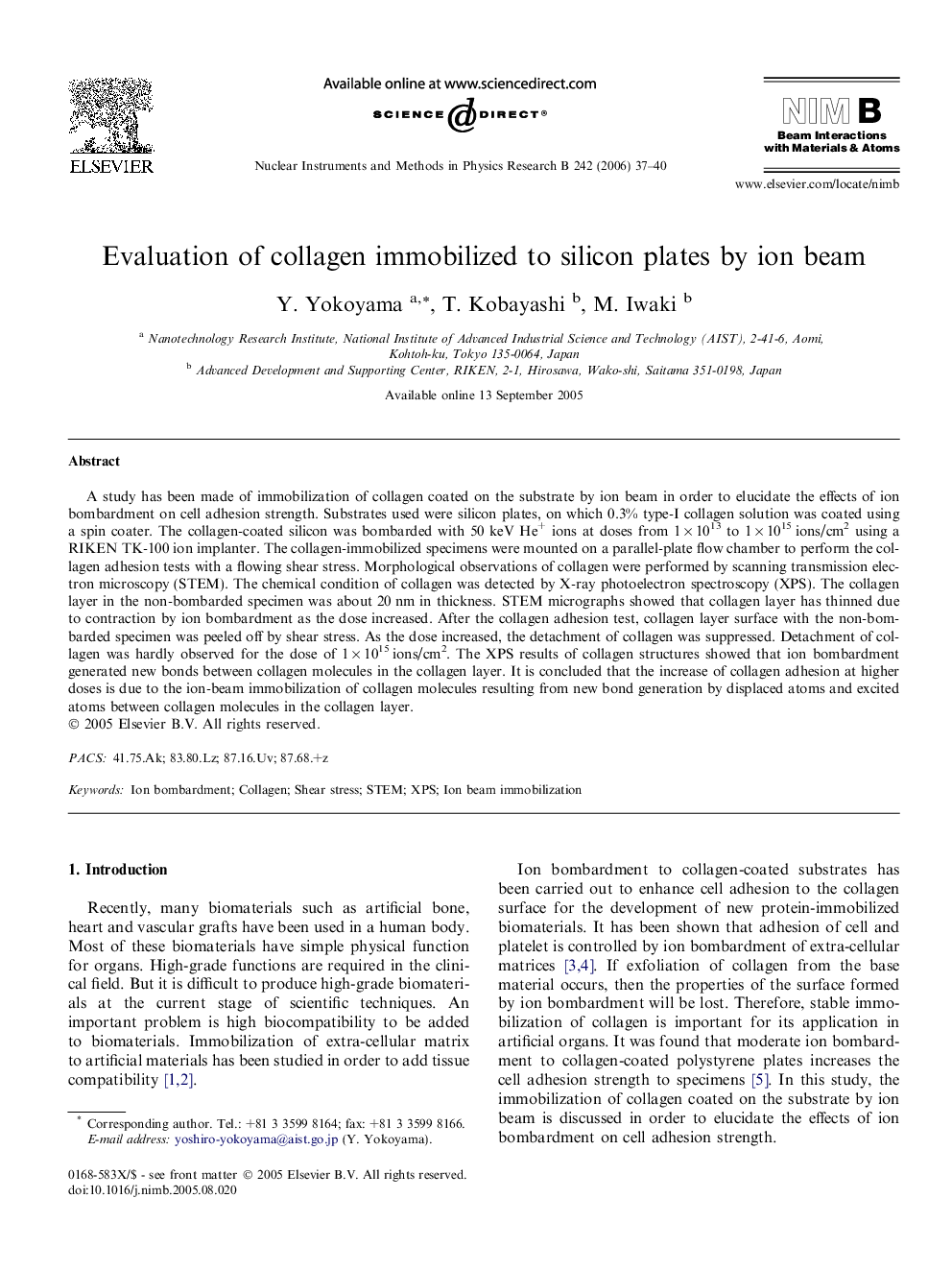| Article ID | Journal | Published Year | Pages | File Type |
|---|---|---|---|---|
| 1684555 | Nuclear Instruments and Methods in Physics Research Section B: Beam Interactions with Materials and Atoms | 2006 | 4 Pages |
A study has been made of immobilization of collagen coated on the substrate by ion beam in order to elucidate the effects of ion bombardment on cell adhesion strength. Substrates used were silicon plates, on which 0.3% type-I collagen solution was coated using a spin coater. The collagen-coated silicon was bombarded with 50 keV He+ ions at doses from 1 × 1013 to 1 × 1015 ions/cm2 using a RIKEN TK-100 ion implanter. The collagen-immobilized specimens were mounted on a parallel-plate flow chamber to perform the collagen adhesion tests with a flowing shear stress. Morphological observations of collagen were performed by scanning transmission electron microscopy (STEM). The chemical condition of collagen was detected by X-ray photoelectron spectroscopy (XPS). The collagen layer in the non-bombarded specimen was about 20 nm in thickness. STEM micrographs showed that collagen layer has thinned due to contraction by ion bombardment as the dose increased. After the collagen adhesion test, collagen layer surface with the non-bombarded specimen was peeled off by shear stress. As the dose increased, the detachment of collagen was suppressed. Detachment of collagen was hardly observed for the dose of 1 × 1015 ions/cm2. The XPS results of collagen structures showed that ion bombardment generated new bonds between collagen molecules in the collagen layer. It is concluded that the increase of collagen adhesion at higher doses is due to the ion-beam immobilization of collagen molecules resulting from new bond generation by displaced atoms and excited atoms between collagen molecules in the collagen layer.
